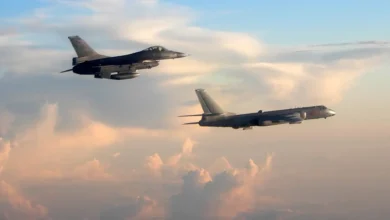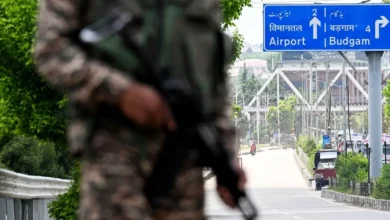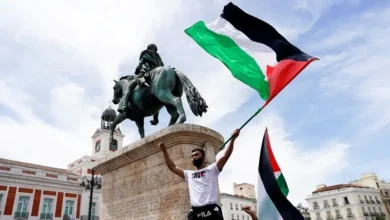‘Slightly’ more food available in Gaza but famine still looms: WHO

The availability of food in the Gaza Strip has very slightly improved, though the risk of famine in the besieged Palestinian territory remains, the World Health Organization said on Friday.
“The food situation has a little bit improved. There’s a bit more food,” Rik Peeperkorn, the WHO representative in the Palestinian territories, told a press briefing in Geneva via video-link from Jerusalem.
Compared to a few months ago, “definitely there is more basic food, more wheat, but also a little bit more diversified food on the market”, he said.
This was “not just in the south (but) also in the north”, where people have been surviving on fewer calories per day than those contained than a can of beans.
Peeperkorn stressed that local food production in the densely populated Gaza Strip — such as fruit, vegetables and fish — had been “destroyed” by the war.
The threat of famine had “absolutely not” gone away, he said.
Ahmed Dahir, the head of WHO’s Gaza sub-office team, said that in previous weeks, “thousands” of people had been rushing at WHO trucks heading to northern Gaza — which is most at risk of famine — in the hope of finding food.
“It has changed in the last few weeks. Now there is more food coming and going to the north,” he said, speaking from the Gaza Strip.
Dahir said food availability nonetheless remained “fragile” in Gaza and people trapped there also lacked the cash to pay for food in the markets.
Risk of famine persists
“We cannot say the risk has passed,” he stressed.
“Access to food now has to be sustained.”
Israel has repeatedly accused the United Nations and non-governmental organizations of not distributing aid quickly enough.
The aid agencies blame the trickle of essential food into the besieged Palestinian enclave on restrictions and inspections imposed by Israel.
Peeperkorn condemned the snags holding up WMO operations around the Gaza Strip.
“Sometimes, what we could do in one mission, we have to do in four. It’s incredibly labor intensive and also incredibly costly,” he said.
The bloodiest-ever Gaza war started after an attack on southern Israel by Palestinian militant group Hamas on October 7, 2023.
The attack resulted in the deaths of 1,170 people, mostly civilians, according to an AFP tally of Israeli official figures.
‘Could lead to slaughter’
Israel’s relentless retaliatory military offensive has killed at least 34,622 people in Gaza — most of them women and children — according to the health ministry in the territory.
Hamas said it was considering in a “positive spirit” a proposed truce and hostage release deal with Israel.
With or without a truce, Israeli Prime Minister Benjamin Netanyahu says he will send ground troops into the southern Gazan city of Rafah, where humanitarian aid groups estimate 1.2 million Palestinians are sheltering.
Peeperkorn said that because almost all medical supplies pass through the Rafah crossing into Gaza from Egypt, the WHO and its partners were preparing contingency plans for the territory’s health system in case of an Israeli offensive.
Jens Laerke, spokesman for the UN humanitarian agency OCHA, said the United Nations had long ago warned that a military operation in Rafah “could lead to a slaughter.”
“For agencies already struggling to provide humanitarian aid in Gaza, a ground invasion would strike a disastrous blow,” he told reporters.
He stressed that Rafah, which has land crossings with Egypt and Israel, was essential to humanitarian relief operations in Gaza.
“Most importantly, there are hundreds of thousands of civilians who have fled to Rafah to escape bombardment, an imminent famine and disease,” he said.
“For them, any ground operation would mean more suffering and death.”









